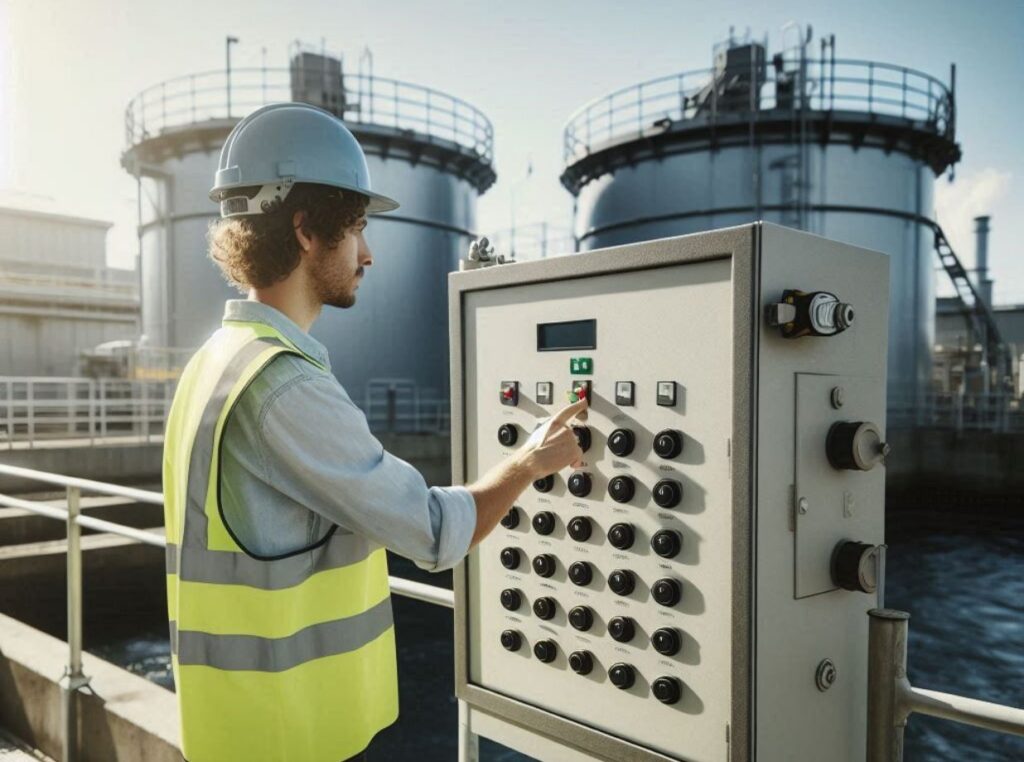
Moving Bed Biofilm Reactors (MBBRs) are a type of wastewater treatment system that utilizes a biological process to remove organic and inorganic pollutants from water. The technology was developed in the 1980s and has since gained popularity due to its efficiency and cost-effectiveness.
MBBRs consist of a tank filled with plastic carriers that provide a surface for the growth of biofilm, which is a thin layer of microorganisms that break down pollutants in the water. The carriers move freely within the tank, creating a dynamic environment that promotes the growth of a diverse and robust microbial community.
How do Moving Bed Biofilm Reactors (MBBRs) work?
Moving Bed Biofilm Reactors operate on the principle of biofilm growth and attachment to the plastic carriers within the reactor. As wastewater flows through the reactor, organic and inorganic pollutants are absorbed onto the surface of the carriers, providing a substrate for the growth of microorganisms.
The design of Moving Bed Biofilm Reactors allows for a high surface area-to-volume ratio, which promotes the growth of a large and diverse microbial community. This results in a highly efficient treatment process that can achieve high removal rates for organic matter, nitrogen, and phosphorus.
Advantages of Moving Bed Biofilm Reactors (MBBRs) in wastewater treatment
Moving Bed Biofilm Reactors offer several advantages over traditional wastewater treatment methods. One of the key benefits is their high treatment capacity and efficiency, allowing for the removal of a wide range of pollutants in a relatively small footprint.
The dynamic nature of the biofilm within the reactor promotes a diverse microbial community, which enhances the resilience and stability of the treatment process. MBBRs are also known for their low sludge production and minimal solids retention, reducing the need for sludge handling and disposal.
Applications of Moving Bed Biofilm Reactors (MBBRs)
MBBRs have widespread applications in municipal wastewater treatment plants, where they remove organic matter, nitrogen, and phosphorus from sewage. They are also commonly used in industrial settings, treating effluents from food processing plants, chemical manufacturing facilities, and pharmaceutical production sites.
The technology has found success in aquaculture and fish farming operations, where it maintains water quality and removes excess nutrients. MBBRs are particularly valuable in decentralized and remote locations such as mining camps, military bases, and rural communities.
Design considerations for Moving Bed Biofilm Reactors (MBBRs)
When designing Moving Bed Biofilm Reactors, several key considerations must be taken into account to ensure optimal performance and reliability. The size, shape, and material of the carriers can impact the efficiency and effectiveness of the treatment process, as well as the mixing and movement within the reactor.
The design must consider factors such as hydraulic retention time, oxygen transfer efficiency, and mixing dynamics to promote microbial growth. Integration with other treatment processes such as primary clarification, secondary sedimentation, or tertiary filtration can enhance overall performance.
Maintenance and operation of Moving Bed Biofilm Reactors (MBBRs)
Regular monitoring and management are essential for optimal MBBR performance. This includes periodic cleaning and replacement of plastic carriers to prevent clogging and fouling within the reactor.
Operators must carefully monitor influent characteristics such as flow rate, organic loading, nutrient concentrations, and pH levels. Regular sampling and analysis of effluent quality ensure compliance with discharge standards.
Comparison of Treatment Technologies
| Feature | MBBR | Activated Sludge | Trickling Filter | Membrane Bioreactor |
|---|---|---|---|---|
| Space Requirements | Low | High | Medium | Low |
| Energy Consumption | Medium | High | Low | Very High |
| Sludge Production | Low | High | Low | Medium |
| Maintenance Needs | Low | Medium | Medium | High |
| Initial Cost | Medium | Medium | Low | High |
| Treatment Efficiency | High | High | Medium | Very High |
| Tolerance to Load Variations | High | Medium | Low | High |
Resources and Further Reading
Below is a curated list of resources offering in-depth insights into MBBR (Moving Bed Biofilm Reactor) systems, their operation, advantages, and applications in wastewater treatment:
- Ecologix Environmental Systems: MBBR Technology
Learn about the moving bed biofilm reactor (MBBR) system and its practical applications in wastewater treatment.
Visit Ecologix Environmental Systems - SSI Aeration: What is MBBR and How Does It Work?
Explore the fundamentals of MBBR technology, including its design and benefits in biological treatment processes.
Visit SSI Aeration - ScienceDirect: Comprehensive Analysis of MBBR Technology
Delve into an academic study on MBBR systems, their functionality, and applications in modern wastewater management.
Visit ScienceDirect - 1H2O3: MBBR Technology Overview
Gain an understanding of MBBR principles, its advantages, and implementation in treatment setups.
Visit 1H2O3 - Gusta Water: MBBR Blog
Access articles and practical insights on the application and benefits of MBBR technology in wastewater treatment.
Visit Gusta Water